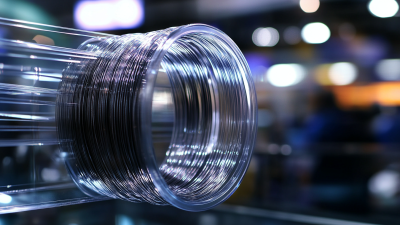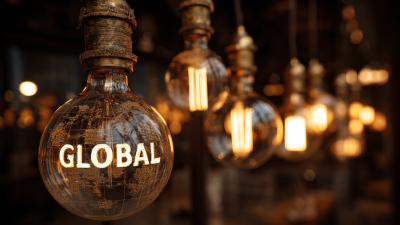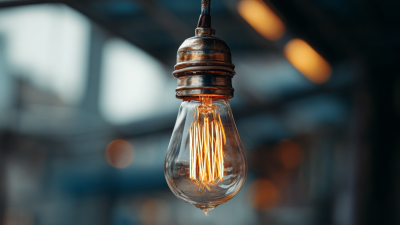The Tungsten Filament has long been a cornerstone of modern lighting technology, providing reliable illumination for various applications, from homes to industrial settings. According to the U.S. Department of Energy, incandescent lighting, which predominantly utilizes tungsten filaments, accounted for approximately 24% of the residential lighting market share as of 2020. This figure highlights the continued relevance of tungsten filaments in an era increasingly dominated by energy-efficient alternatives. As various technologies, such as LED and compact fluorescent lamps, continue to gain traction, the unique attributes of tungsten filaments—namely their ability to produce high-quality light and warm color temperature—remain relevant.

Understanding the science behind Tungsten Filament not only illuminates its operational principles but also underscores its enduring significance in developing innovative lighting solutions that meet both aesthetic and functional demands in our modern world.
Tungsten has long been a favored material in filament design, primarily due to its superior thermophysical properties. With a melting point exceeding 3,400°C, tungsten is capable of withstanding intense heat, allowing it to generate powerful light output without failing. According to a report from the U.S. Department of Energy, incandescent light bulbs, which utilize tungsten filaments, can produce around 15 lumens per watt—much lower than modern LED technologies—yet they provide a warm light quality that many consumers prefer. This unique property of tungsten helps create a specific light spectrum that enhances visual comfort and ambiance in various settings.
Furthermore, tungsten’s high tensile strength and durability contribute to longer-lasting filaments. As documented in the International Journal of Lighting Research and Technology, tungsten filaments can significantly extend the lifespan of incandescent bulbs, averaging between 1,000 to 2,000 hours of use. This is crucial for applications where consistent lighting is needed, such as in retail and hospitality environments. While the industry is steadily shifting towards more energy-efficient solutions, understanding the science behind tungsten filaments remains essential for recognizing their role in modern lighting and the impact they still have on consumer preferences and design considerations.

Tungsten filaments play a crucial role in the functioning of incandescent bulbs, which have been a staple in lighting since their invention. The filament, typically made from tungsten due to its high melting point and excellent conductive properties, is heated until it glows, producing light. This process involves passing an electric current through the filament, allowing it to reach temperatures of approximately 2,300 degrees Celsius. The strength and durability of tungsten enable it to withstand this stress, leading to its widespread use in traditional light bulbs.
However, the efficiency of tungsten filaments in incandescent bulbs is a topic of discussion. While they provide a warm and pleasant light, incandescent bulbs are significantly less energy-efficient compared to modern lighting technologies such as LEDs. The majority of the energy consumed by incandescent bulbs is released as heat rather than light, resulting in substantial energy loss. Despite this drawback, tungsten filaments continue to be valued for their ability to produce high-quality light and are often favored in settings where color rendering and ambiance are paramount. Manufacturers are also seeking to enhance the efficiency of tungsten-based bulbs, exploring methods to reduce energy consumption while retaining the desirable qualities of incandescent lighting.
| Parameter | Value | Significance |
|---|---|---|
| Melting Point of Tungsten | 3422 °C | High melting point allows for intense heat without melting. |
| Efficiency of Incandescent Bulbs | 10-17 lumens per watt | Comparatively low efficiency compared to LED and CFL lights. |
| Lifespan of Tungsten Filaments | 750-2,000 hours | Short lifespan affects overall cost and replacement frequency. |
| Color Temperature | 2700K - 3000K | Warm light suitable for home environments; simulates natural light. |
| Wattage Range | 40W - 100W | Variety allows for different lighting needs and applications. |
| Environmental Impact | Higher CO2 emissions due to energy consumption | Increased focus on energy-efficient alternatives. |
Tungsten filaments have long been the backbone of traditional incandescent lighting, but in today’s world, they face stiff competition from various alternative lighting technologies. Options like LED and fluorescent lighting offer greater energy efficiency and lifespan, making them increasingly popular among consumers and businesses alike. Tungsten filaments provide a warm, inviting glow that many people cherish, yet they consume more energy and have a shorter lifespan compared to modern alternatives.
For those considering a switch to newer lighting technologies, keep in mind these tips: opt for LED lights for their durability and low energy consumption. They can last up to 25 times longer than tungsten filaments, translating to significant savings in replacement costs. Additionally, if you desire the aesthetic warmth of incandescent lighting, look for LED “warm white” options that mimic the luminous quality of tungsten filaments without sacrificing efficiency.
Moreover, while tungsten filaments are less efficient, they provide instant illumination without any warm-up time, making them suitable for certain applications. However, as modern lighting continues to evolve, evaluating your lighting needs and weighing the pros and cons of filament versus alternative technologies will guide you to the best choice for your environment.
Tungsten filaments have played a crucial role in modern lighting solutions, providing a reliable and efficient source of illumination since their introduction. One of the most significant impacts of tungsten filaments is on energy consumption. Compared to traditional incandescent bulbs, those utilizing tungsten filaments offer improved efficiency, enabling users to achieve similar brightness levels while consuming less electricity. This advantage not only reduces household energy bills but also lessens the overall demand on power grids, which can be particularly beneficial during peak times.
Moreover, the use of tungsten filaments contributes to sustainability efforts in the lighting industry. By consuming less energy, these filaments help decrease the carbon footprint associated with electricity generation, particularly in regions reliant on fossil fuels. Additionally, tungsten’s durability ensures a longer lifespan for light sources, further reducing waste and the frequency of replacements. As the world increasingly prioritizes energy efficiency and sustainability, tungsten filaments stand out as a vital component in the ongoing transition to greener lighting technologies.
As the demand for efficient and sustainable lighting solutions grows, tungsten filament technology is poised for significant advancements. Researchers are exploring new methods to enhance the thermal efficiency and longevity of tungsten filaments. By optimizing the filament's geometry and employing advanced materials to bolster its strength, innovators aim to produce lamps that emit brighter light while consuming less energy. These improvements not only promise to lower electricity costs for consumers but also contribute to reducing the environmental footprint of lighting technology.

Furthermore, the integration of smart technology with tungsten filaments holds exciting potential. Future designs may incorporate sensors to adjust brightness based on ambient light conditions or user preferences, enhancing both comfort and efficiency. Additionally, advancements in coating techniques could enable tungsten filaments to emit a broader spectrum of light, improving color rendering and aesthetic appeal for various applications. With these innovations, tungsten filaments may continue to play a crucial role in the evolution of lighting solutions, merging traditional reliability with cutting-edge technology to meet the needs of modern society.






